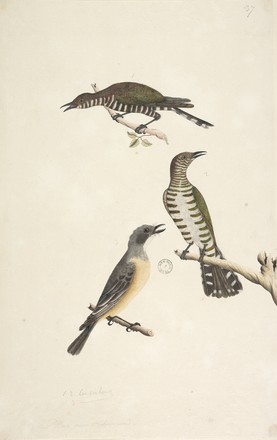
‘Cuculous’: Golden bronze cuckoos (Cuculus plagosus), and Rufous whistler (Pachycephala rufiventris), 1790s
Mitchell Library, State Library of NSW ; Purchased 1887; PXD 226, f. 46
Watercolour with gold leaf


 Back to list
Back to list